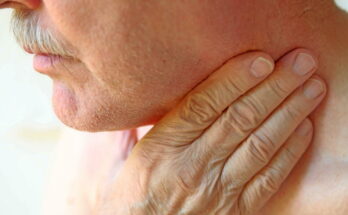The global restoration of the Palacio de los Vargas will return to the people of Madrid “a unique element of heritage, both cultural and natural” in 2027, when it will be reborn as the Casa Real de Campo, as Marta Rivera de la Cruz explained this Friday to the City Council of Madrid. The delegate for Culture, Tourism and Sport of the municipal government underlined the efforts made to draw up a plan that recovers the building – which once served as the second residence for King Philip II – “as faithfully as possible” to its origins. The funds Next generation of the European Union’s Tourism Sustainability Plan in Destinations (PSTD) 2023, which contributes 10 million euros, will make it possible to create a new museum space and tackle the overall restoration of the heritage complex, in which the Municipality has already invested more than 800,000 euros in historical and archaeological studies and in the elimination of added elements that “distorted the interpretation of the building”.
The history of the Royal Casa de Campo began its course at the beginning of the 16th century, when the influential Vargas family built its recreational estate there. The building has had a very important role in the history of Madrid, as explained by José Luis Sancho Gaspar, National Heritage researcher and curator of the Royal House of Campo, since it is directly linked to Philip II’s decision to move the capital of the Court from Valladolid to Madrid in 1561. “The House of Campo, even before being one of the royal sites, was part of that landscape that explains why Madrid became the capital, because of those forests that surrounded it.” The flora of Mount El Pardo attracted the Castilian monarchs, according to the expert, because it was a habitual resting place for bears and wild boars, as it already appeared in the 14th century in Hunting book —a sort of manual on Hispanic landscapes at the time of King Alfonso XI—.
Over time the Vargas mansion has undergone numerous transformations in its appearance, among which two in particular stand out. First of all, the reform that Philip II undertook in the 16th century, when he purchased the estate from the widow of Francisco de Vargas, Antonia Manrique de Valencia, and which gave rise to a house in three sections, with a clear geometric design that extended to the garden. Later, in the 17th century, monarch Charles III commissioned Francisco Sabatini to restore the exterior. The Italian architect modified the facade to adapt to Italian villas, the roof and raised the floor of the house by half a mast – about 40 centimeters. These two milestones are what inspired the team of over 30 professionals who worked on the project.
Recent excavations have brought to light the beginnings of the walls of the sixteenth-century house, whose internal organization remained practically intact until the twentieth century. Original floors from the 16th, 17th and 18th centuries also appeared, especially in the western pavilion, as well as Mudéjar tiles, bases and capitals, a 16th-century column integrated into a rear wall, remains of fireplaces, missing stair structures and original beams in the central hall. All these findings “will allow us to recover not only the architecture of the building, but also the history of those who inhabited it and transformed it over time”, according to the City of Madrid.
The recovery of the historic garden, however, will allow the display of a Renaissance example of over 10,000 square metres, of which over 4,000 will be dedicated to planted areas. The future area will have nearly 25,000 plants, including 155 new trees, including hardwoods, perennials and fruit trees, a collection of 120 rose bushes and more than 700 shrubs. The new species will include orange and espalier fruit trees, evoking the tradition of Renaissance court gardens.
Rivera de la Cruz stressed that the recovery of the garden of the Real Casa de Campo “will allow the people of Madrid and visitors to stroll in a space that, five centuries later, preserves the spirit of Philippine gardens.” Madrid thus adds “a new historic garden to gems such as those of Sabatini, El Capricho or those of Cecilio Rodríguez”.
The intervention comes “at the most appropriate time”, as underlined by the Municipality’s Councilor for Culture, since 2027 marks the 500th anniversary of the birth of King Philip II. By that date it is expected that the works will be completed and that the new Casa Reale de Campo will have opened its doors to citizens. Subsequently, the Municipality of Madrid will be able to present the result of what it considers “one of the most significant patrimonial actions” of the mandate.



